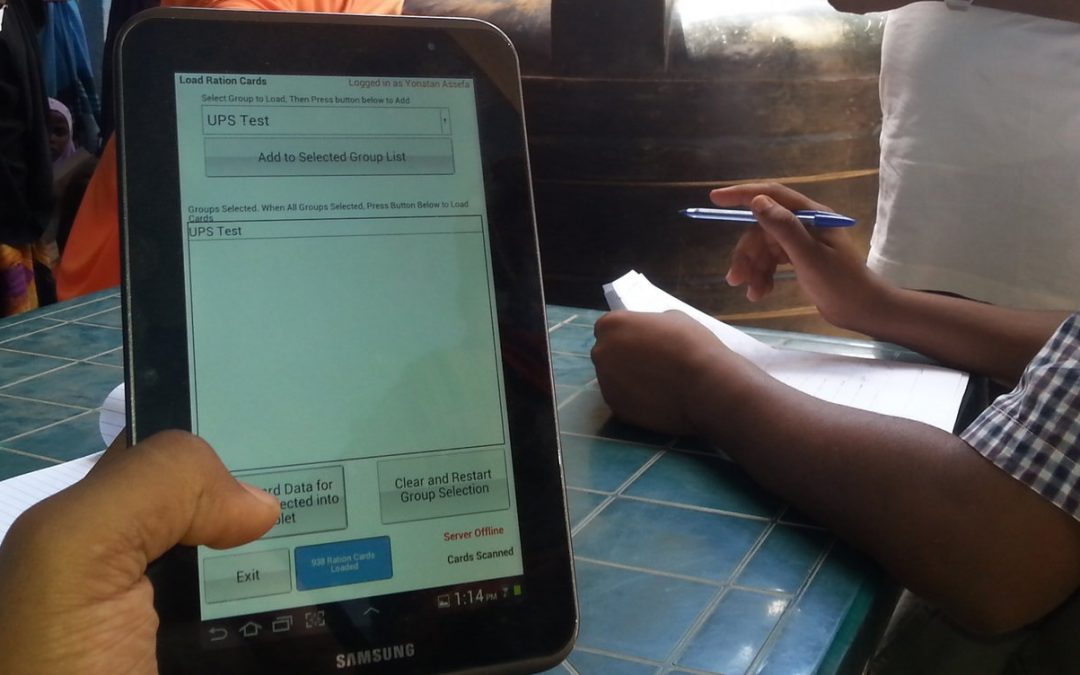I’ve always believed that managing innovative projects is like managing chaos. A lot of it.
As part of our initial planning meeting to deploy ReliefLink in the refugee camps in Dollo Ado, Ethiopia, we agreed to send a monthly progress report in order to keep track of our progress, untie knots, and to make our work more transparent. This no simple task for an innovation lab manager.
Why? Because a humanitarian innovation project does not follow the rules of simple project management. For this reason, the conventional tools used for measuring progress cannot be applied by the book. A manager of a humanitarian innovation project must have an embedded mental toolbox – filled with different assessment and design tools – that could be used according to the needs of the project. Allow me to explain.
ReliefLink in Dollo Ado is in its prototype testing phase. When a humanitarian innovation project gets to this point it means that the solution has proven to be the most appropriate in terms of contextual need, and (sometimes) it has already been proven to be effective in another setting. In the case of ReliefLink, we’ve seen proof of its effectiveness in Mauritania.
In a normal humanitarian project cycle we would work with a linear/cyclical process:
- Preparedness
- Needs assessment and analysis
- Joint Planning
- Resource mobilization and allocation
- Implementation
- Monitoring and evaluation
However, for a humanitarian innovation project, this process is by no means simple or linear in practice. Rather, it is cyclical in every step and can go clockwise or counter clockwise.
Testing a prototype is challenging because the context is different each time, therefore we cannot use a cyclical structure. In humanitarian innovation, more than in any other sector, one size definitely does not fit all. The implementation process becomes blurry when the testing process is not working, and sometimes we need to go back to the planning and evaluation phase while implementing at the same time. For this reason, I need a form that can capture these changes.
I also need to test different variations of the prototype, to see which elements fit into the context. Remember, the prototyping testing phase is always in plural: prototypes testing. Some of the variations of ReliefLink can be, for example:
Format: using android tablets to capture distribution data or the trackpad (which looks like a pocket pc or personal digital assistant).
Content: are we distributing to certain vulnerable groups? Can I disaggregate data into gender or other variables?
Context: I need to take into consideration the distribution event type (is it hygiene kits? are we distributing blankets?) in order to think about the content for this month’s reporting form.
Framework of analysis: the reporting tool will need to capture both quantitative and qualitative data derived from the prototypes tests in order to create a baseline for evaluation along with some qualitative inputs. For those familiar with program evaluation: It’s like combining theory of change with outcomes mapping, mixing indicators elements for a simple logframe and then adding some of the baseline construction elements of RCTs… good luck with that!
It’s also really important that I don’t create an additional reporting burden to our already overstretched staff. I need to think about the format of the reporting tool. It needs to be simple, easy to fill out, and easy to track. It needs to help the staff to be able to report progress and (of course) failure in a very simple way. This is what innovation is about; documenting the process in order to foster agile design, not reinventing the wheel.
In addition to this, I need to think about connectivity issues. I am working under the assumption – important note to the reader: always identify your assumptions– that connectivity in Dollo Ado is not great. I therefore need to go ‘back to the basics’ with this reporting tool. I will use a google form to capture all their inputs, because the format is simple and it doesn’t require too much bandwith to download.
The hardest part is adding indicators to the form. The indicators are important to see if our main project objective is aligned with our mandate. The indicators should also provide baseline data for future implementation. Furthermore, these indicators need to follow the “SMART” format (specific, measurable, assignable, realistic, time-related). Even the phrasing of the question on the form is important to capture the right indicator I’m looking for.
Finally, at some point along the implementation process, I would need to refine the form again in order to be able to capture the feedback of project participants – at the very least, the perceptions of staff. This simple Google form then becomes a prototype in itself. I will report back with staff feedback on the form. Wish me luck!
*Link Lab Diaries Series is a reflection on management of the innovation process. It is intended to document the process and the journey of managing the Link Lab, in a qualitative way.
We’re always looking for great stories, ideas, and opinions on innovations that are led by or create impact for refugees. If you have one to share with us send us an email at [email protected]
If you’d like to repost this article on your website, please see our reposting policy.

